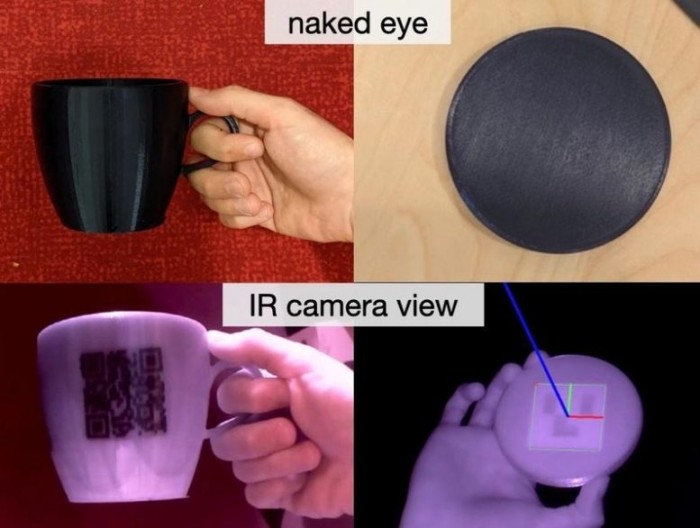A team at the Massachusetts Institute of Technology (MIT) developed3D printingLabels for classifying and storing data for physical objects. If you download music online, you can get side information embedded in the digital file that might tell you the title of the song, its genre, the featured artist, composer and producer in a particular track. Likewise, if you download a digital photo, the information you can get may include the time, date and place where the photo was taken. This led Mustafa Doga Dogan to wonder if engineers could do something similar for real objects. “That way we can inform ourselves faster and more reliably when we’re walking around a store, museum or library,” he thought.

At first, the idea was a bit abstract to Dogan, a fourth-year doctoral student in MIT’s Department of Electrical Engineering and Computer Science. But his ideas were cemented in the second half of 2020, when he heard about a new smartphone model with cameras that utilize the infrared (IR) range of the electromagnetic spectrum, which is imperceptible to the naked eye. Additionally, infrared light has the unique ability to see through certain materials that are opaque to visible light. This feature in particular could be useful, Dogan thought.
Working with colleagues at MIT’s Computer Science and Artificial Intelligence Laboratory (CSAIL) and a research scientist at Facebook, he came up with a concept called InfraredTags.These labels replace the labels affixed to the product
standard
Barcodes, which may be removed or detached or become unreadable over time, while these labels are inconspicuous (because they are invisible) and more durable because they are embedded in standard3D printinginside a machine-made object.
Last year, Dogan spent months trying to find a suitable variety of plastic that would allow infrared light to pass through.It must be specifically3D printerThe design comes in the form of a spool. After an extensive search, he found custom plastic filaments produced by a small German company that seemed promising. He then analyzed a sample using a spectrophotometer at MIT’s Materials Science Laboratory and found that it was opaque to visible light, but transparent or translucent to infrared light — exactly the property he was looking for.
The next step is to experiment with techniques for making labels on printers. One option is to generate the code by carving tiny air gaps — a replacement for zeros and ones — in a layer of plastic. Another option, assuming existing printers can handle it, is to use two plastics, one that emits infrared light and one that is opaque — with the code engraved on it. Where possible, a two-material approach is best because it provides sharper contrast and therefore can be more easily read with an infrared camera.
The label itself can consist of the familiar barcode, which presents the information in a linear, one-dimensional form. Two-dimensional options – such as square QR codes (often used for return labels) and so-called ArUco (target) markings – may contain more information in the same area.The MIT team has developed a
software
A “user interface” that specifies exactly what a label should look like and where it should appear on a particular object. In fact, multiple tags can be placed in the same object, providing convenient access to information in situations where the view from certain angles is obstructed.
Fraser Anderson, Senior Principal Research Scientist at the Autodesk Technology Centre in Toronto, Ontario commented: “InfraredTags is a really smart, useful and exploitable way to embed information into objects. I can easily imagine a future where , you can point a standard camera at any object and it will give you information about the object — where it was made, the materials used, or the repair instructions — and you don’t even have to look for a barcode.”
(responsible editor: admin)


0 Comments for “MIT team develops invisible 3D-printed machine-readable labels that can identify and track objects”